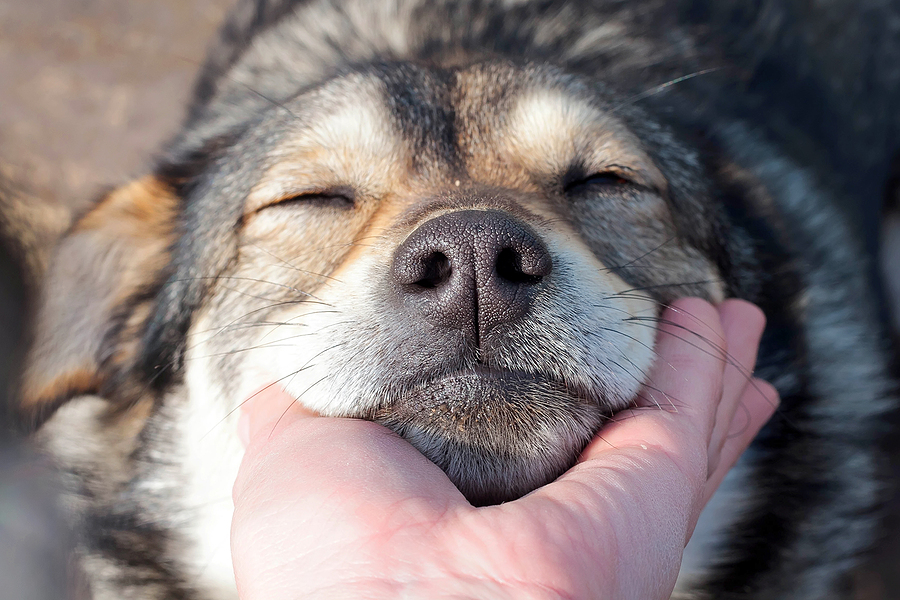I had just started a private training lesson when I noticed the little Poodle’s right eye was swollen, with yellow-greenish goop gathering in the corner and seeping down the side of his nose. He kept winking at me, clearly uncomfortable.
“Has Buddy seen your veterinarian?” I asked. “Poor guy, his eye looks awful!”
“I just got back,” my client said. “He has an eye infection. The vet gave me eye drops, but there’s a problem.”
“What’s wrong?” I asked.
“Buddy won’t let me give him the drops. He’s never really let me touch his face.”
Buddy was three years old. Even though he had managed to make it this far without his pet parent needing to handle his face, now it was an emergency. It wasn’t something I could fix in a one-hour lesson, especially since now the poor little guy was in pain. While we worked on the problem over subsequent lessons, my client had to take Buddy to the vet twice daily so the staff there could administer the drops.
Don’t let this happen to you. Teach your dog to enjoy gentle, positive handling so you can take care of his physical health. A great place to start is teaching your dog a chin rest to make it easier to give medication or perform medical procedures.
If your dog rests his chin on your open, slightly cupped hand, this gives you easy access to his head. While he holds this position, you can access his eyes, ears, and muzzle. Teach him to rest his chin on another surface, such as an ottoman, and you’ll have easy access to the rest of his body.
For example, you could direct your dog to rest his chin on a chair. While he holds the position, a veterinarian can administer a vaccine to your dog’s rear leg or take blood from a vein in a rear leg. Your dog could also do a chin rest in your hand while a veterinarian examines him. By making the chin rest a positive action, this will reduce your dog’s stress during his care.
How to Teach a Chin Rest
Hold out your hand, palm up and sideways to your dog, with your thumb pointed toward your dog. Use a treat to lure your dog’s chin to come across your palm and rest upon it. Mark with a clicker or use a verbal marker, such as “Yes!” and give your dog the treat.
Gradually increase the length of time your dog must hold his chin on your palm before you click. Start with one second, then two, then three, etc.
When your dog is reliably putting his chin on your palm, it’s time to add your verbal cue. Say, “(Your dog’s name), chin” and then present your palm. By now, your open palm is your dog’s hand signal to rest his chin upon it.
Adding Distractions
When your dog can hold his chin on your palm for a full minute, start adding distractions. Make them easy at first. Here are some examples:
While your dog holds a chin rest in your palm…
- Hold up an eye drop bottle. Click and treat if he holds position.
- Hold up an eye drop bottle and pretend to administer an eye drop. Click and treat if he holds position.
- Gently lift one of his ears with your other hand. Click and treat if he holds position.
- Gently lift both ears. Click and treat if he holds position.
If at any time he breaks position, make the next repetition easier.
Early Training for Later Care
Everyone thinks about teaching their dog basic obedience or fun tricks. It’s rare to think about training your dog to accept handling or health care until you’re faced with a situation that calls for it. Start now, before you need it. Illnesses and injuries are never fun but using Fear Free training to help your dog better cope with them is just good preventive medicine.
This article was reviewed/edited by board-certified veterinary behaviorist Dr. Kenneth Martin and/or veterinary technician specialist in behavior Debbie Martin, LVT.
Teoti Anderson, CPDT-KA, KPA-CTP, is the vice president of A Dog’s Best Friend, located in Ft. Lauderdale, Florida. A professional dog trainer for more than 23 years, she is the author of The Dog Behavior Problem Solver, Dog Fancy Ultimate Guide to Dog Training, Animal Planet Dogs 101 Dog Training, Puppy Care and Training, The Super Simple Guide to Housetraining, Quick & Easy Crate Training, and Your Outta Control Puppy. A popular conference speaker, she has given presentations to pet owners, humane organizations, and fellow trainers across the United States and internationally.
Want to stay in the loop on the latest and greatest in keeping your pet happy and healthy? Sign up for our free newsletter by clicking here!








